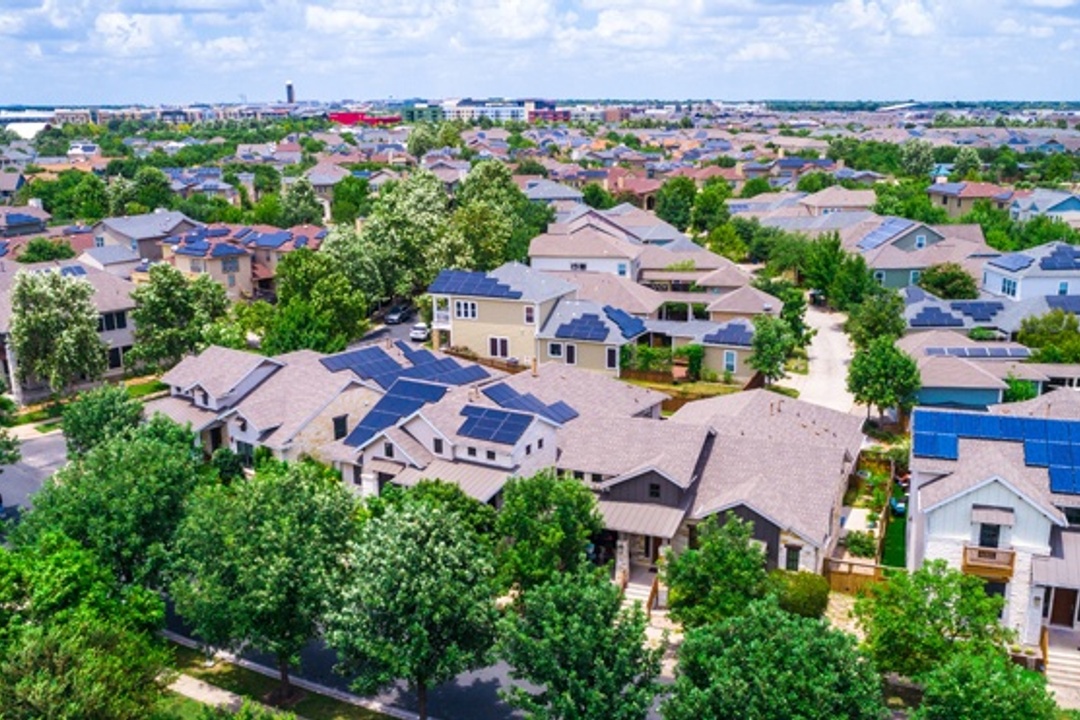
As of February 22, 2023, the average 30-year fixed Texas mortgage rate was 7.00%, slightly higher than the national average of 6.77%. Since its peak in November 2022, the rate has been decreasing gradually, although the average 30-year fixed rate is still relatively high.
Moreover, housing prices in Texas have dropped slightly, although they are still sitting well above their 2020 averages. For example, in January 2023, median home prices in Austin dropped 6.3% to $450,000, the largest price drop since July 2011.
However, the Texas housing market isn't predicted to undergo any unexpected changes owing to a low housing inventory of only 2.7 months and high mortgage rates. While mortgage rates are anticipated to decrease, at some point, following the significant increase in 2022, industry experts don’t expect any sudden drops in 2023 as the housing market adjusts to stabilize.
Mortgage Rate Predictions for 2023
The average 30-year fixed mortgage rate in Texas has been on a gentle downward curve since the beginning of 2023. According to Ashley Jackson, ABoR president, “January’s data demonstrates the Austin-Round Rock MSA market is continuing to find a post-pandemic normal.”
Mortgage rates fluctuated greatly in 2022. From as low as 3.22% in January 2022, the average 30-year fixed rate reached 7.08% in November 2022, largely due to Federal Reserve’s efforts to curb inflation. Now that a recession is expected, the rates are unlikely to peak past last year’s high.
Here’s how some expert mortgage sources predict fixed mortgage rates in 2023.
* Mortgage Bankers Association (MBA): 2023 may end at a 30-year mortgage rate of 5.2%.
* National Association of Realtors (NAR): Mortgage rates may stabilize below 6% in 2023.
* Freddie Mac: The average 30-year mortgage rate may drop to 6.6% in Q1 and end at 6.2% in Q4.
* Realtor.com: Mortgage rates may remain in the 6% to 7% range.
Texas mortgage rates mirror national averages more or less. Hence, Texas’s housing market trends also closely follow larger national trends with minor variations due to local factors.
Impact on the Housing Market in Austin
According to the Austin Board of Realtors, in January 2023, residential home sales declined 27.3% year-over-year (YOY). New listings dropped 16% YOY; however, monthly housing inventory increased from 2.3 months to 2.7 months of inventory. In addition, new listings increased by 63.4% compared to December 2022.
This shows that buyers may be discouraged by the higher mortgage rates, and the higher monthly payments that come along with those higher numbers. However, despite the decline in home sales, inventory remains low. The increase in new listings may help balance the inventory levels, bringing us back to what’s considered a “balanced market” (six months of inventory).
The Austin-area housing market continued to set price records in 2022, but home sales declined, and inventory increased slightly, shifting the market towards buyers in 2023.
Impact on the Housing Market in San Antonio
According to the San Antonio Board of Realtors, home sales have been falling throughout 2022. The median price for houses sold in 2022 was $323,000, 14% higher than in 2021. However, Sara Briseño Gerrish, board chairwoman of SABOR, thinks the housing market won’t see any “dramatic changes” in 2023 as she remarked that “Texas is still a strong market,” despite the likelihood of a recession.
During the talks at SABOR’s recent 2023 Housing Forecast, many experts predicted that this year might see a more balanced housing market instead of being a strong seller’s market. High mortgage rates are likely responsible.
Impact on Housing Market in Corpus Christi
According to the Corpus Christi Association of Realtors, the median home price increased by 2.2% YOY, valued at $254,345 with 2.7 months of inventory. Active listings increased by 47.6%, with 199 sales closed in January 2023, a 30.4% increase from last year. With mortgage rates still on the higher side, high home value, and low inventory, the housing market in Corpus Christi might continue to be competitive for buyers.
Although the market remains desirable, prospective buyers should consider affordability, as interest rates impact budgets and construction costs, and supply chain issues could affect inventory in the future. Despite these challenges, job creation continues to boost the Texas economy.
It's important to note that any predictions are not set in stone, as they can be impacted by factors such as inflation, economic growth, and global events.
What Factors Influence Mortgage Rates
Mortgage rates are influenced by a wide range of local factors, and the market can also be affected by economic, regulatory, and demographic changes. Homebuyers and homeowners need to stay informed about local conditions and work with a qualified mortgage professional to find the best rates and terms for their needs.
Many local factors can affect mortgage rates in Texas. Some of these factors include:
* Local Economic Conditions: The strength of the local economy can significantly impact mortgage rates. Texas's economy is going strong even though the growth rate is lower than in 2022. If the economy of a state is weak or experiencing a downturn, mortgage rates may be higher to offset the risk of lending.
* Housing Supply and Demand: The balance between housing supply and demand can also affect mortgage rates. If there is high demand for homes but low supply, mortgage rates may be higher to reduce demand and maintain affordability. Conversely, if there is a low demand for homes but an increased supply, mortgage rates may be lower to encourage borrowing and investment.
* Regulatory Environment: Local regulations can also impact mortgage rates. For example, if there are restrictions on development or zoning that limit the supply of new housing, mortgage rates may be higher to offset the risk of lending in a restricted market.
* Competition Among Lenders: If there are many lenders competing for business, rates may be lower as lenders try to attract borrowers. However, if there are fewer or few dominant lenders, rates may be higher as borrowers have limited options.
* State and Local Taxes: State and local taxes can also impact mortgage rates. If taxes are high, mortgage rates may be higher to offset the increased cost of borrowing. For example, Texas is a non-judicial foreclosure state, which means that foreclosures are handled outside the court system. This can make the foreclosure process faster and less expensive for both lenders and borrowers.
Other factors that may impact personal mortgage rates are an individual’s credit score, loan type, and downpayment.
How Will Current Mortgage Rates Affect the Housing Market in Texas?
Texas has been a strong seller's market through November 2022; however, the continued high mortgage rates is fueling a drop in average home prices and changing the housing market in 2023. Let’s see what it means for buyers and sellers.
If You’re a Home Seller
While sellers will likely still do well, Texas’s housing market is showing signs of slowing down. Home prices are dropping along and homes on the market are experiencing longer listing times. If you're considering selling your Texas home, working with a local real estate agent who understands the market and can help you price your home competitively is beneficial.
This can be crucial since the longer a house stays on the market, the harder it can be to sell it. A real estate agent can assist you in determining the correct worth of your property.
If You’re a Homebuyer
According to the recent Buyer-Seller Market Index, many Texas cities, including Austin and Dallas, are projected to favor buyers and may even become buyers’ markets in a year or so.
Homebuyers now have more negotiating power than when the COVID pandemic initially disrupted the market, leading to higher prices. Nevertheless, it's still crucial for buyers to set a clear budget as mortgage rates are still quite high, and inventory across Texas is lower than the ideal inventory of six months.
Declining mortgage rates in Texas could potentially lead to increased home sales and affordability; however, at the moment, the downward slope is too shallow for accurate predictions. As more buyers return to the market, it may put a strain on already low housing inventory, which may drive up home prices and offset the benefits of lower mortgage rates.










